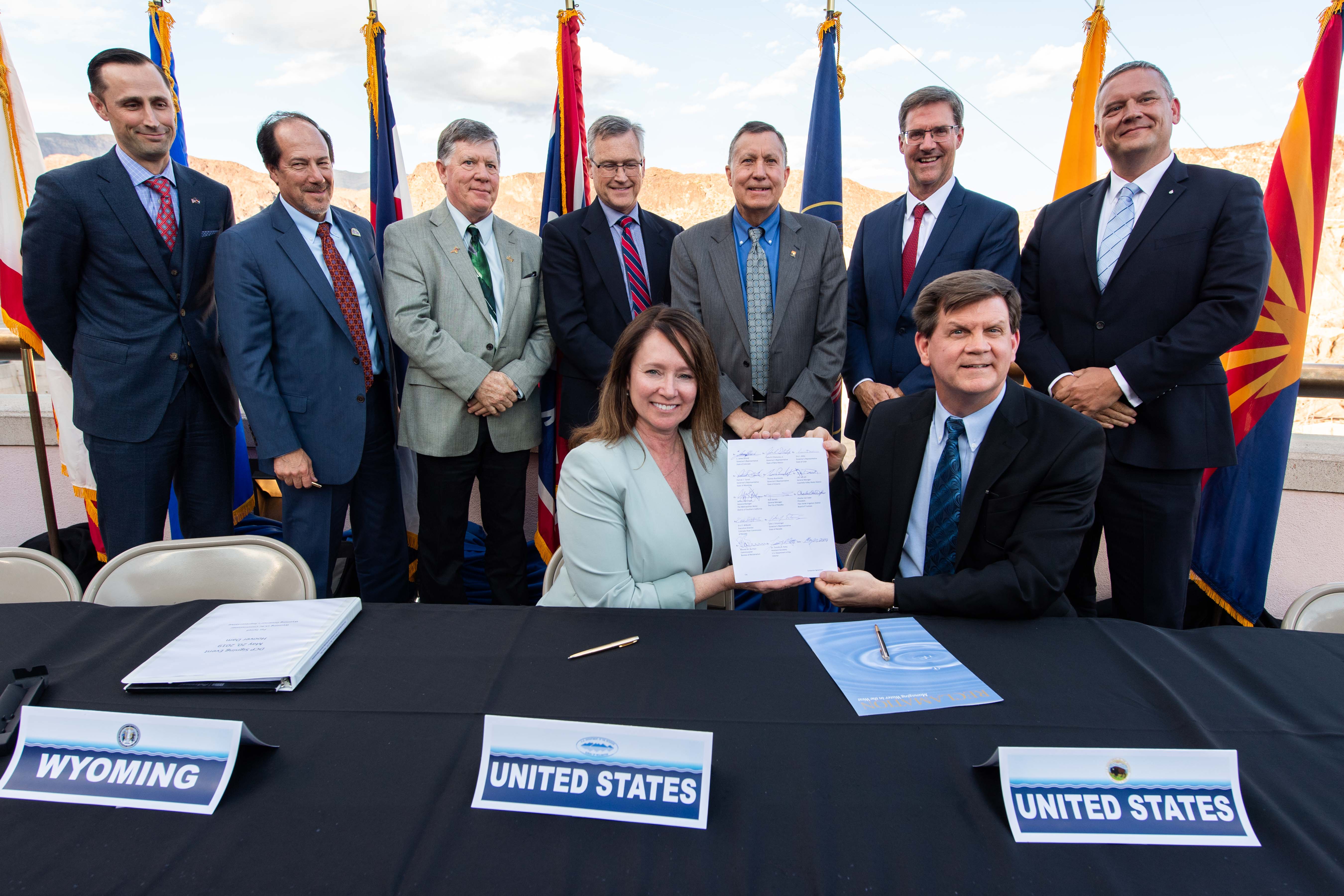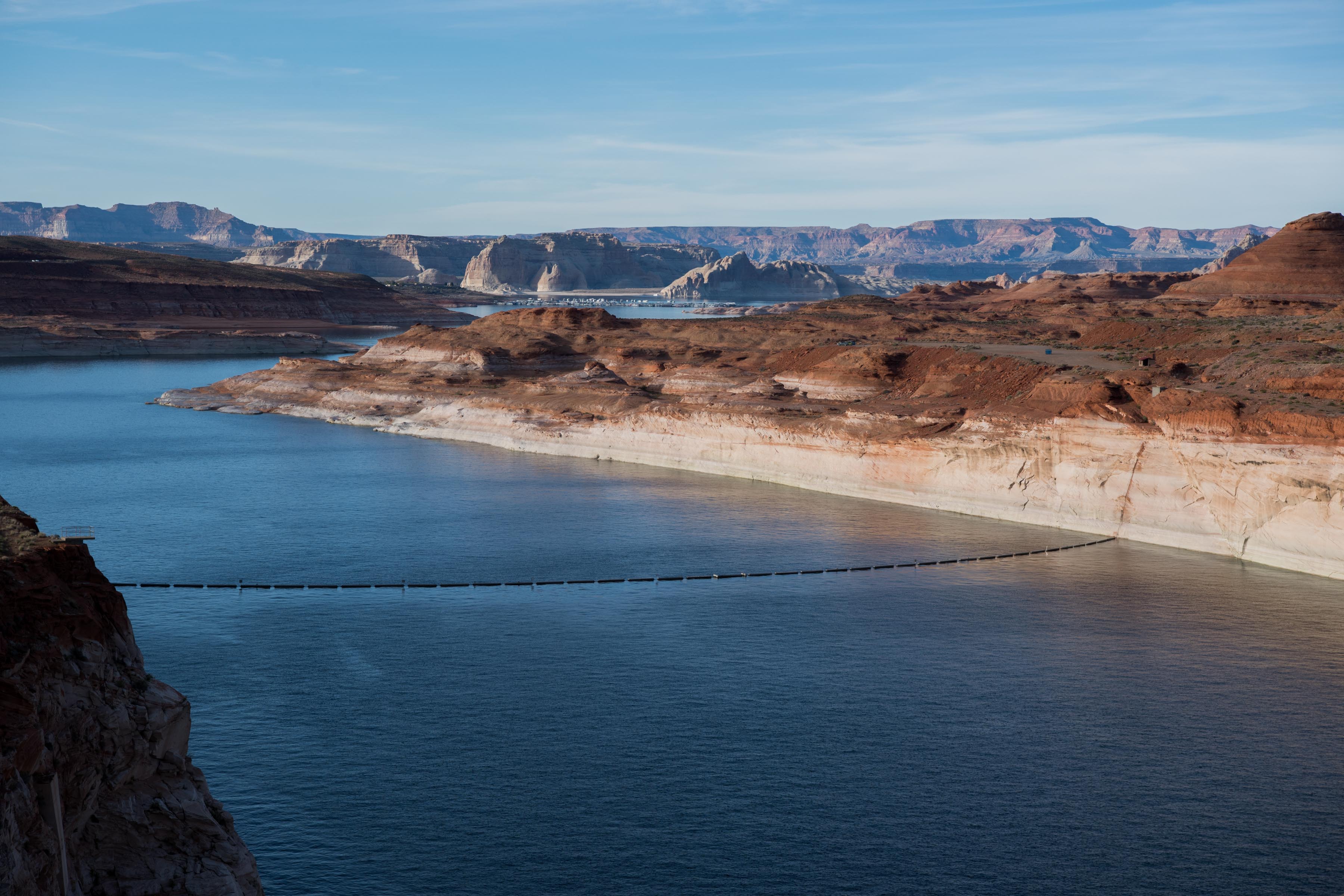
States sign agreement to help boost Lake Powell and Lake Mead
Faced with a looming water crisis in the West, representatives from seven states connected to the Colorado River joined federal officials May 20 at Hoover Dam in Boulder City, Nevada, to sign plans aimed at reducing the risk to water supplies after nearly two decades of drought.
“This is an historic accomplishment for the Colorado River Basin,” said Brenda Burman, commissioner of the U.S. Bureau of Reclamation. “Adopting consensus-based drought contingency plans represents the best path toward safeguarding the single most import water resource in the western United States.”
The signing ceremony for the Colorado River Basin Drought Contingency Plans follows congressional approval and President Donald Trump’s signature for the plans in April. The plans represent collaboration and compromise from each basin state, American Indian tribes and Mexico, according to Burman.
The drought contingency plans focus on how Colorado, Arizona, California, Nevada, New Mexico, Utah and Wyoming will work together to create a reliable water supply using the Colorado River.
Importance of the river
The Colorado River Basin supplies drinking water for more than 40 million people. It’s also critical to the environment and used for recreation, hydropower and agriculture.
Denver Water receives half of its water from tributaries that feed into the Colorado River.
Despite bountiful snow during the winter of 2018-19, water demand and years of drought conditions in the Colorado River Basin since 2000 have left two major reservoirs — lakes Powell and Mead — at 39% and 41% full, respectively.
The drought contingency plans are a short-term set of guidelines aimed at propping up water levels at Powell and Mead and preventing them from falling below critically low levels, which would threaten water supply and the ability to generate hydropower.
Colorado River Compact, basins and reservoirs
Under the 1922 Colorado River Compact, management of the Colorado River was split into the upper basin states of Colorado, New Mexico, Utah and Wyoming. The lower basin states consist of Arizona, California and Nevada.
Leaders from both basins worked together on how to handle the supply and demand imbalance issues surrounding use of Colorado River water. The upper and lower basins developed their own drought contingency plans, which are companion agreements approved by each basin.
Upper basin states use Lake Powell like a “savings account” to store water and ensure there is enough water available to send downstream to lower basin states, as required by the Colorado River Compact.
Lower basin states use Lake Mead to store and regulate water for municipal and agricultural water users.
Under the lower basin plan, Arizona, California and Nevada agreed to voluntarily cut water usage if the water level at Lake Mead reaches a set of critically low action points.
The river’s upper basin states agreed to let more water flow into Lake Powell to avert critically low water levels. Now, those four states must work on the challenging task of figuring out how to make that happen as a group.
Demand management program
The upper basin’s drought contingency plan allows for the creation of a demand management program in the upper basin states.
Under such a program, municipal and agricultural water users in those states could be asked to reduce their water consumption in order to send more water flowing into Lake Powell.
Not only do the four states have to work together, but each state must come up with its own implementation plan for potential, future water reductions to meet the terms of the broader agreement.
In Colorado, water leaders are looking at the feasibility of a demand management program that would be voluntary and include compensation for giving up some of their water to help raise levels at Lake Powell.
Landmark agreement
“The drought contingency plans are a huge success toward maintaining a sustainable water supply for those who rely on the Colorado River,” said Rick Marsicek, planning manager at Denver Water. “We have a lot of work ahead of us. Continued cooperation among all water users and the states will be critical moving forward.”
The plan will last through 2026 until a new long-term river use agreement must be signed.
“Look at all we have accomplished by working together,” Burman said. “All the states should be commended for finding a path forward."



